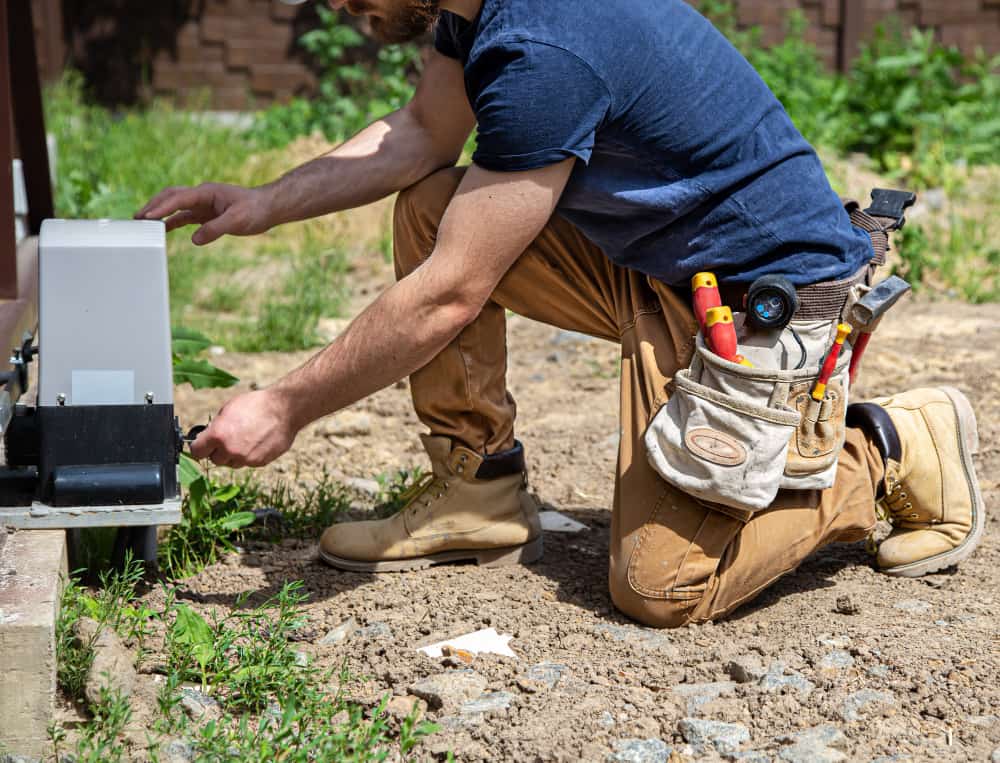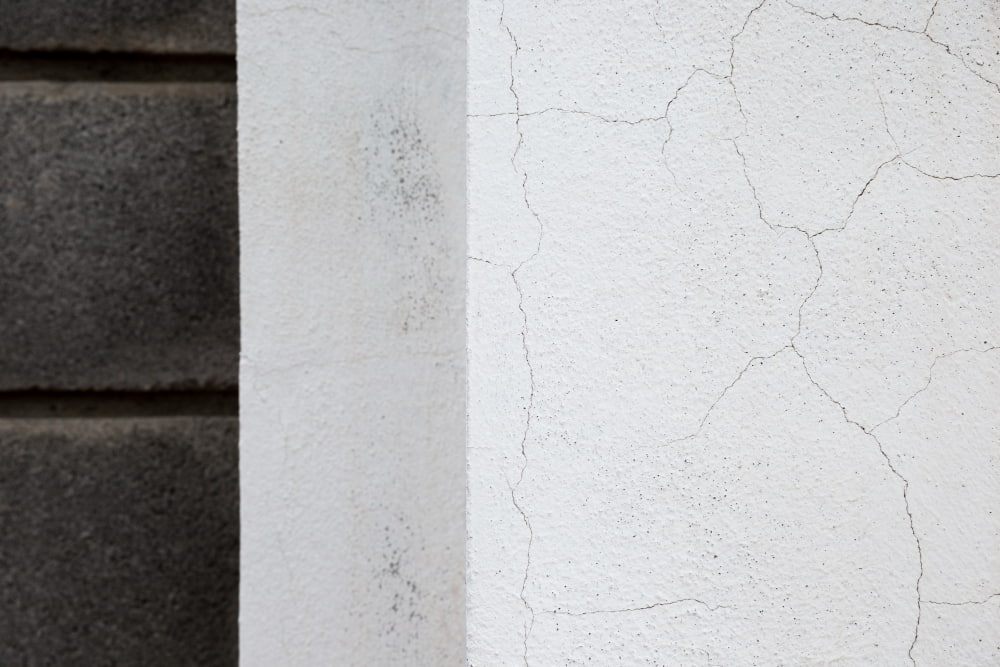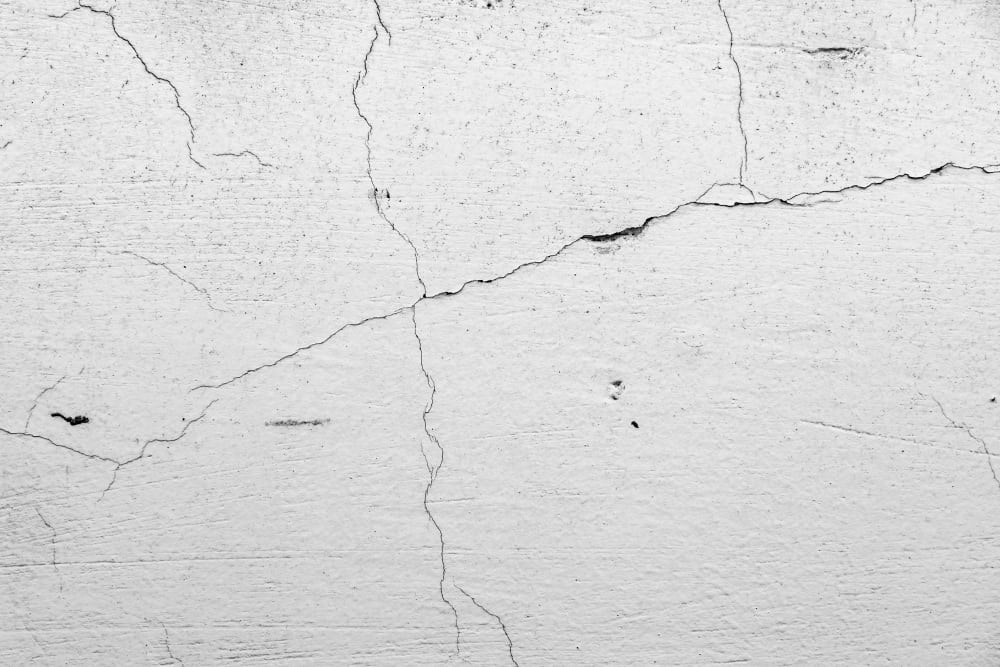Proper yard drainage is crucial for maintaining the health and stability of your property. Without an effective drainage system, water can accumulate in unwanted areas, leading to a range of issues. Excess water can cause soil erosion, damage plant roots, and create muddy patches in your yard. Over time, poor drainage can also result in more serious problems, such as basement flooding, foundation damage, and increased pest activity due to standing water. Ensuring proper drainage not only protects your landscape but also prevents costly repairs and maintains the structural integrity of your home.
Signs of Yard Drainage Problems
Identifying yard drainage issues early can help prevent costly damage and maintain a healthy landscape. Here are some common signs that indicate poor drainage:
- Water Pooling: If you notice standing water in your yard or around your home after a rainstorm, it’s a clear sign of poor drainage. Water pooling occurs when your yard doesn’t have the proper slope to direct water away from your property. This stagnant water can lead to soggy grass, damaged plants, and even breed mosquitoes if left untreated.
- Soggy Soil: Soil that remains wet for extended periods can suffocate plant roots and lead to poor grass and plant health. Over time, soggy soil can prevent proper nutrient absorption, causing grass to turn yellow and plants to wilt. This condition is especially problematic in areas where water consistently fails to drain properly.
- Erosion: Soil erosion is another telltale sign of yard drainage problems, particularly on slopes or in gardens and flower beds. When water isn’t properly diverted, it can wash away topsoil, leaving exposed roots and barren patches in your yard. Erosion can destabilize landscaping features, weaken plant health, and create an uneven, unattractive lawn.
- Basement Flooding: Improper yard drainage can also lead to basement leaks or flooding. When water is unable to flow away from the house, it can seep into the foundation, causing cracks or water damage. This can lead to structural issues, mold growth, and a damp, musty smell in your basement.
- Mildew or Mosquitoes: Excessive moisture around your home can create a breeding ground for pests, especially mosquitoes. Stagnant water provides the ideal environment for mosquitoes to lay eggs, increasing the risk of infestation. Additionally, moisture trapped in areas like basements or near the foundation can lead to mildew and mold growth, which can pose health risks for you and your family.
Recognizing these signs early allows homeowners to take action before yard drainage problems escalate into more severe and expensive issues.
Common Yard Drainage Issues
Several factors can contribute to poor yard drainage, often resulting in standing water, soggy lawns, and long-term property damage. Here are the most common yard drainage problems homeowners face:
Poor Grading
One of the primary causes of yard drainage issues is poor grading. Grading refers to how the ground is sloped around your property. If your yard doesn’t have the proper slope, water won’t flow away from the foundation and other important areas. Instead, it will pool in low spots, potentially causing basement flooding and soil erosion. For optimal drainage, your yard should slope away from your home by at least 2-3% to allow water to flow safely toward drainage systems.
Compacted Soil
Compacted soil occurs when soil particles are pressed tightly together, preventing water from being absorbed properly. Heavy foot traffic, vehicles, or construction work can lead to compacted soil, especially in areas with clay-rich soil. When the ground becomes compacted, water tends to run off the surface rather than soak into the soil. This can lead to standing water, poor plant health, and an overall decline in yard aesthetics.
Clogged or Broken Gutters and Downspouts
Gutters and downspouts play a crucial role in directing water away from your home. When gutters become clogged with leaves, debris, or ice, they can overflow, causing water to spill onto the ground near your foundation. Broken or disconnected downspouts can also contribute to drainage problems by allowing water to pool in undesirable areas. Over time, this can lead to soil erosion, basement flooding, and damage to your home’s foundation.
Inadequate Drainage Systems
Yards without proper drainage systems are more prone to flooding and standing water. A lack of systems like French drains, catch basins, or surface drains prevents water from being properly redirected away from your home. Similarly, if drainage systems are improperly installed or maintained, they can fail to function effectively. Without an adequate system in place, water accumulates in low-lying areas, leading to long-term landscape and structural damage.
Hardscaping Problems
Hardscaping features, such as patios, driveways, and sidewalks, can also cause drainage issues if not installed correctly. Impermeable surfaces like concrete and asphalt prevent water from being absorbed into the ground, causing runoff. If hardscaping is installed without a proper slope nor a drainage system, water can pool in unwanted areas, contributing to erosion and damage to surrounding landscaping. Additionally, poorly designed hardscape features can direct water toward your foundation, increasing the risk of basement flooding.
By understanding and addressing these common yard drainage issues, you can protect your property from water damage and maintain a healthy, functional landscape.
How to Fix Common Yard Drainage Problems

If you’re experiencing drainage issues in your yard, there are several effective solutions to address the problem and prevent further damage to your landscape and home. Below are some common fixes for yard drainage problems:
Regrading the Yard: Regrading, or re-sloping, your yard is one of the most effective ways to correct drainage issues. By adjusting the slope of your yard, you can ensure that water flows away from your home and toward a drainage area. Regrading involves removing soil from high areas and filling in low areas to create a gradual slope. For proper drainage, your yard should have a minimum slope of 1 inch per 10 feet, directing water away from your foundation and low-lying areas. This process is best done by a professional to ensure precise and lasting results.
Installing a French Drain: A French drain system is a popular solution for yard drainage problems, especially in areas with significant water accumulation. French drain systems consist of a perforated pipe buried in a gravel-filled trench, which collects and redirects water away from problem areas. Here’s a step-by-step overview of how to install a french drain system in OKC:
- Excavate a Trench: Dig a trench in the area where water tends to pool. The trench should be sloped slightly downward to guide water toward a drainage outlet.
- Line the Trench: Place landscape fabric inside the trench to prevent soil from clogging the drain over time.
- Add Gravel: Fill the trench with gravel, leaving enough room to insert the perforated pipe.
- Install the Pipe: Place the perforated pipe in the trench, ensuring it’s positioned to carry water away from your yard.
- Cover with Gravel and Fabric: Add more gravel over the pipe and fold the landscape fabric over the top. This will prevent debris from entering the drain.
- Fill the Trench: Cover the trench with soil or sod to restore the landscape.
A French drain effectively redirects excess water and prevents pooling in your yard.
Aerating the Soil: Compacted soil can significantly affect your yard’s drainage. Aerating the soil helps loosen compacted areas, allowing water to be absorbed more easily into the ground. This can improve grass and plant health by providing roots with better access to water and nutrients.
To aerate your soil:
- Use a core aerator, which removes small plugs of soil, creating space for water, air, and nutrients to penetrate the ground.
- Focus on compacted areas, especially where you notice water pooling.
- Aerate your lawn at least once a year to promote better drainage and overall yard health.
Extending Downspouts: Clogged or short downspouts can cause water to pool around your home’s foundation. Extending your gutter downspouts is a simple yet effective solution to direct water away from your house and into a designated drainage area. To extend downspouts:
- Attach an extension to the end of your existing downspout.
- Ensure the extension reaches a point at least 5 to 10 feet away from your foundation.
- Direct the extension toward a drainage system, dry well, or garden area.
- This method prevents water from seeping into the foundation and reduces the risk of basement flooding.
Installing Catch Basins or Dry Wells
Catch basins and dry wells are effective drainage solutions for collecting and managing excess water in your yard. A catch basin is a drainage box that collects water from the surface and directs it to an underground drainage system. Dry wells, on the other hand, store excess water underground, allowing it to slowly filter into the surrounding soil. Here’s how to install a catch basin or dry well:
- Determine the Low Spot: Install the catch basin or dry well in an area where water naturally accumulates.
- Dig a Hole: Excavate a hole deep enough to accommodate the catch basin or dry well.
- Install the Drain: For catch basins, connect the drainage pipes to guide water away from your yard. For dry wells, fill the hole with gravel to allow water to filter into the ground.
- Cover with Soil: After installation, cover the system with soil or sod to restore the landscape.
Catch basins and dry wells prevent standing water and help maintain healthy soil by efficiently redirecting excess water.
These methods can effectively address common yard drainage issues, ensuring a dry, healthy yard and protecting your property from water damage.
When to Call a Professional
While many yard drainage problems can be managed with DIY solutions, certain situations require the skills of a professional. Here are some scenarios where you should consider seeking professional help:
Persistent Flooding: If your yard regularly experiences large areas of standing water, especially after rainfall, it may be a sign of a larger drainage issue that simple fixes can’t resolve. Professionals can assess the problem and install more advanced drainage systems, such as underground pipes or stormwater management solutions.
Major Erosion: Significant soil erosion, particularly on slopes or near your foundation, can cause severe damage to your landscaping and home. A professional can help regrade your yard, stabilize the soil, and implement erosion control measures to prevent further issues.
Basement or Foundation Leaks: If poor yard drainage is causing water to seep into your basement or damage your foundation, it’s critical to consult a professional. A professional can provide waterproofing solutions, repair cracks, and ensure that water is being properly redirected away from your home.
Complex Grading Issues: Regrading a yard can be a challenging and labor-intensive task that requires precision. If your property has significant grading problems or uneven terrain, a professional will have the experience and equipment to ensure that water flows away from your home without causing new issues.
Installing Advanced Drainage Systems: If your yard requires a more complex drainage system, such as a French drain, dry well, or sump pump, it’s best to call in a professional to ensure proper installation. Poorly installed systems can lead to more drainage problems and costly repairs.
Calling a professional at the right time can save you from bigger issues down the road, such as structural damage to your home, extensive landscaping repairs, and increased costs.
Addressing yard drainage problems early is crucial to prevent long-term damage to your home and landscape. Ignoring poor drainage can lead to serious issues, such as foundation damage, basement flooding, soil erosion, and unhealthy plants. By identifying the signs of drainage problems and implementing the right solutions—whether it’s installing a French drain, regrading your yard, or aerating the soil—you can protect your property and ensure a healthy outdoor environment.
If you’re experiencing yard drainage problems, don’t wait until the damage worsens. Contact Bill’s Custom Concrete today for professional solutions that protect your home and landscape. Let our team help you create a healthier, more efficient yard drainage system!









